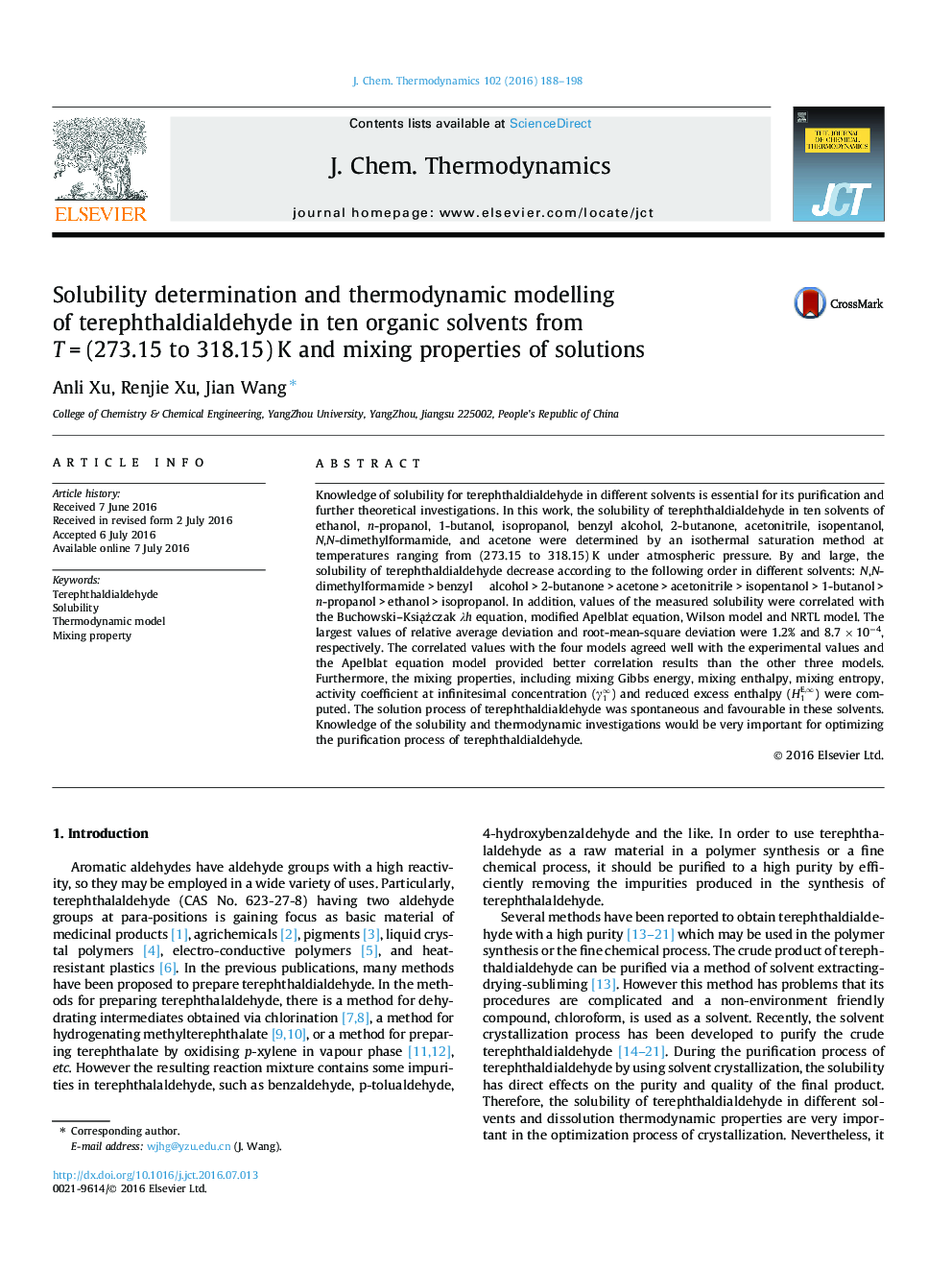| کد مقاله | کد نشریه | سال انتشار | مقاله انگلیسی | نسخه تمام متن |
|---|---|---|---|---|
| 214875 | 1426211 | 2016 | 11 صفحه PDF | دانلود رایگان |

• Solubility of terephthaldialdehyde in ten solvents were determined.
• The fusion enthalpy of terephthaldialdehyde were determined.
• The solubility were correlated with four thermodynamic models.
• The mixing properties of solutions were evaluated.
Knowledge of solubility for terephthaldialdehyde in different solvents is essential for its purification and further theoretical investigations. In this work, the solubility of terephthaldialdehyde in ten solvents of ethanol, n-propanol, 1-butanol, isopropanol, benzyl alcohol, 2-butanone, acetonitrile, isopentanol, N,N-dimethylformamide, and acetone were determined by an isothermal saturation method at temperatures ranging from (273.15 to 318.15) K under atmospheric pressure. By and large, the solubility of terephthaldialdehyde decrease according to the following order in different solvents: N,N-dimethylformamide > benzyl alcohol > 2-butanone > acetone > acetonitrile > isopentanol > 1-butanol > n-propanol > ethanol > isopropanol. In addition, values of the measured solubility were correlated with the Buchowski–Książczak λh equation, modified Apelblat equation, Wilson model and NRTL model. The largest values of relative average deviation and root-mean-square deviation were 1.2% and 8.7 × 10−4, respectively. The correlated values with the four models agreed well with the experimental values and the Apelblat equation model provided better correlation results than the other three models. Furthermore, the mixing properties, including mixing Gibbs energy, mixing enthalpy, mixing entropy, activity coefficient at infinitesimal concentration (γ1∞) and reduced excess enthalpy (H1E,∞) were computed. The solution process of terephthaldialdehyde was spontaneous and favourable in these solvents. Knowledge of the solubility and thermodynamic investigations would be very important for optimizing the purification process of terephthaldialdehyde.
Figure optionsDownload as PowerPoint slide
Journal: The Journal of Chemical Thermodynamics - Volume 102, November 2016, Pages 188–198